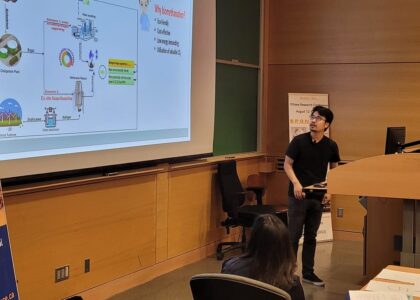Santa Man Rai.
Global warming leading to climate change is a rapidly growing global threat to humanity and environment. The Himalayan glaciers, including Nepalese glaciers are facing a great threat by their rapid melting process because of global warming and recently changes unpredicted monsoon patterns. Millions of populations residing in the southern slope of the Himalayan region depend on snow-fed rivers for drinking water, irrigation, hydroelectricity, and agriculture among others. The production of excessive emission of Green House Gases (GHGs) is because of deforestation, careless farming, industrialization, urbanization, automobiles, infrastructures, and the burning of fossil fuels. In Nepal, even where the contribution of GHGs emission is very negligible, the melting of glaciers has been posing a serious challenge. At present in Nepal deforestation, unscientific cultivation, use of pesticides in agriculture, unscientific infrastructure development, unscientific urbanization, use of more personnel vehicles, burning of biomass, etc. play vital roles to produce the GHGs emission that assist to increase the temperature. Rapid melting of glaciers causes the Glacier Lake Outburst Flood (GLOF), which produces landslides and floods in the downstream. Such events are responsible for catastrophic damages of lives and property, water resources, biodiversity, and agricultural fields. The people of Nepal will also probably be facing a challenging phase with scarcity of the water resources for drinking and irrigation supply.
The research carried out in the Langtang Valley, Central Nepal attempts to find out the impact of climate change on glacier retreat and local community based on the studies of available long-term hydrological-meteorological data, satellite image analysis of glaciers from 1979 to 2009, and observation of local people and their experience on climate change issues. The high-altitude areas of the Langtang Valley show a consistent trend of increase in temperature. It is clear evidence of the global warming, which has caused a fast melting of glaciers with both horizontal and vertical retreats. The Lirung Glacier and the Kimjung Glacier of the Langtang Valley have retreated for over 900 metre and 400 metre, respectively, with an average retreat of about 40 metre/year and total vertical retreat in the snout position is 100 metres for both. The study also reveals that this glacier retreat is due to an increase in temperature and a change in patterns of precipitation and snowfall. The study also shades light on some socio-economic impacts of such changes on the livelihood of marginal communities residing downstream the affected areas.
A preparation of the better guidelines for adaptive measures and policy formulation helps to take a decision to reduce the impact of climate change. Similarly, climate change diplomacy is also to be intensified at earliest to have controlled the GHGs emission overall Himalayan region. Such approach will surely be helpful to protect natural resources and environment of the Himalaya.
View/Download the presentation from here.
Keywords: Climate change, GHG emission, Langtang glaciers, glacier retreat, environment, community impact
Author: Santa Man Rai1* and Tara Nidhi Bhattarai2*
1. KarmaQuest International, Ottawa, Canada
2. Department of Geology, Tri-Chandra Campus, Tribhuvan University, Nepal






